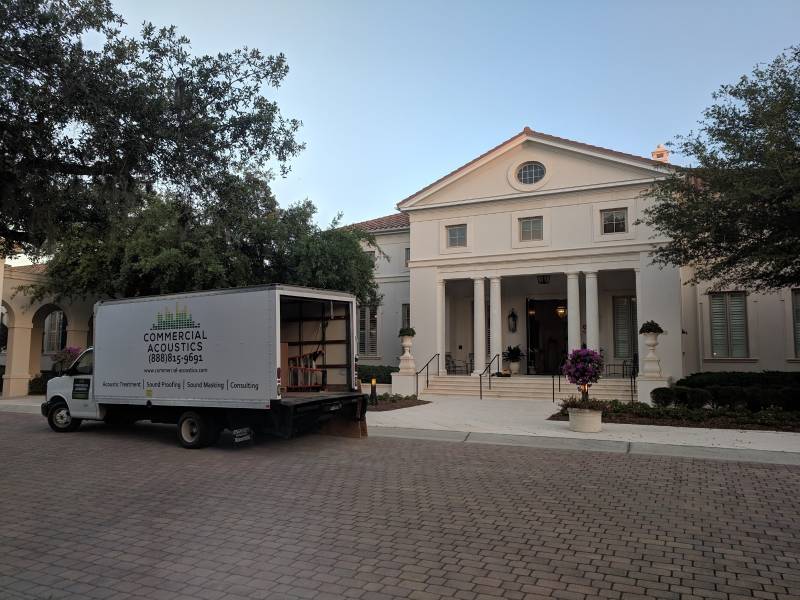A common complaint that we receive at Commercial Acoustics is when Golf Clubhouse Acoustics are overly reverberant, allowing an excessive echo that disrupts patrons. Clubhouses have a wide range of acceptable reverb times, but they should never exceed 1.3 seconds, especially if amplified speech or speaking engagements are going to be used in the space. Even in Golf and Country Club dining rooms, reverberation should be kept in the 0.7-1.3 second range to allow for casual and comfortable conversation.
Best Ways to Treat Golf Clubhouses for Acoustics
As is often the case, clubhouses and dining halls have long reverberation because two driving factors – tall ceilings, and reflective surfaces. Large rooms with tall ceilings allow a buildup of noise, and increase the distance sound must travel in order to impact a surface, and therefore be absorbed into the structure. Meanwhile, reflective surfaces are commonplace where food and beverage are served, since dining rooms and clubhouses want to minimize cleaning and maintenance in these spaces. Soft, porous surfaces that are good at absorbing sound are also good at soaking up spills and stains, making cleaning very time-intensive.
At the Concession Clubhouse in Bradenton Florida, the acoustics in the main dining room were problematic for a number of the club members. After 3-4 tables were seated, it became increasingly difficult to understand conversation
Clubhouse Echo before Acoustic Panel Install
Commercial Acoustics performed a site visit to measure the dimensions of the room, record the finishes (for floor, ceiling, and wall), and perform an initial reverberation assessment. The room dimensions were 18’x42’x24′ high. Due to the high ceilings, the loud echo in the clubhouse was not surprising. The floors were hardwood, walls were painted drywall, as was the ceiling. Therefore, it was a large, voluminous space with very little absorptive area. An initial acoustic calculation was performed to determine the expected reverb time, and yieled 1.65 seconds. The field reverberation measurement was also close to this calculation, at 1.76 seconds.
Via Sabins Formula, we were able to determine that approximately 32 architectural acoustic panels at 2’x4’x2″ Thick would reduce the reverberation time significantly, to about 1.1 seconds.This goal reverberation would make speech in the clubhouse much more comfortable during speaking events or busy restaurant times.
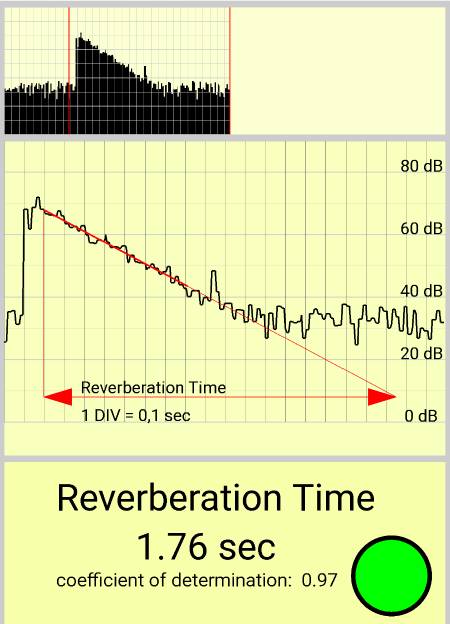
Clubhouse Echo after Acoustic Panel Install
Due to the 24′ high ceilings, a scissor lift was needed in the space to allow access high along the walls, above the decorative wood paneling. The acoustic panels were fabricated with a high-end, Guilford of Maine acoustical fabric, which allowed them to achieve an NRC (or Noise Reduction Coefficient) of 1.05.
Installation of the custom panels was completed approximately 3 weeks after the initial order. Reverberation assessments were completed at the halfway mark of the installation, as well as at the completion. The reverberation times dropped to 1.36 seconds after the initial 16 panels, then to 1.09 seconds after the final 16 acoustic panels.

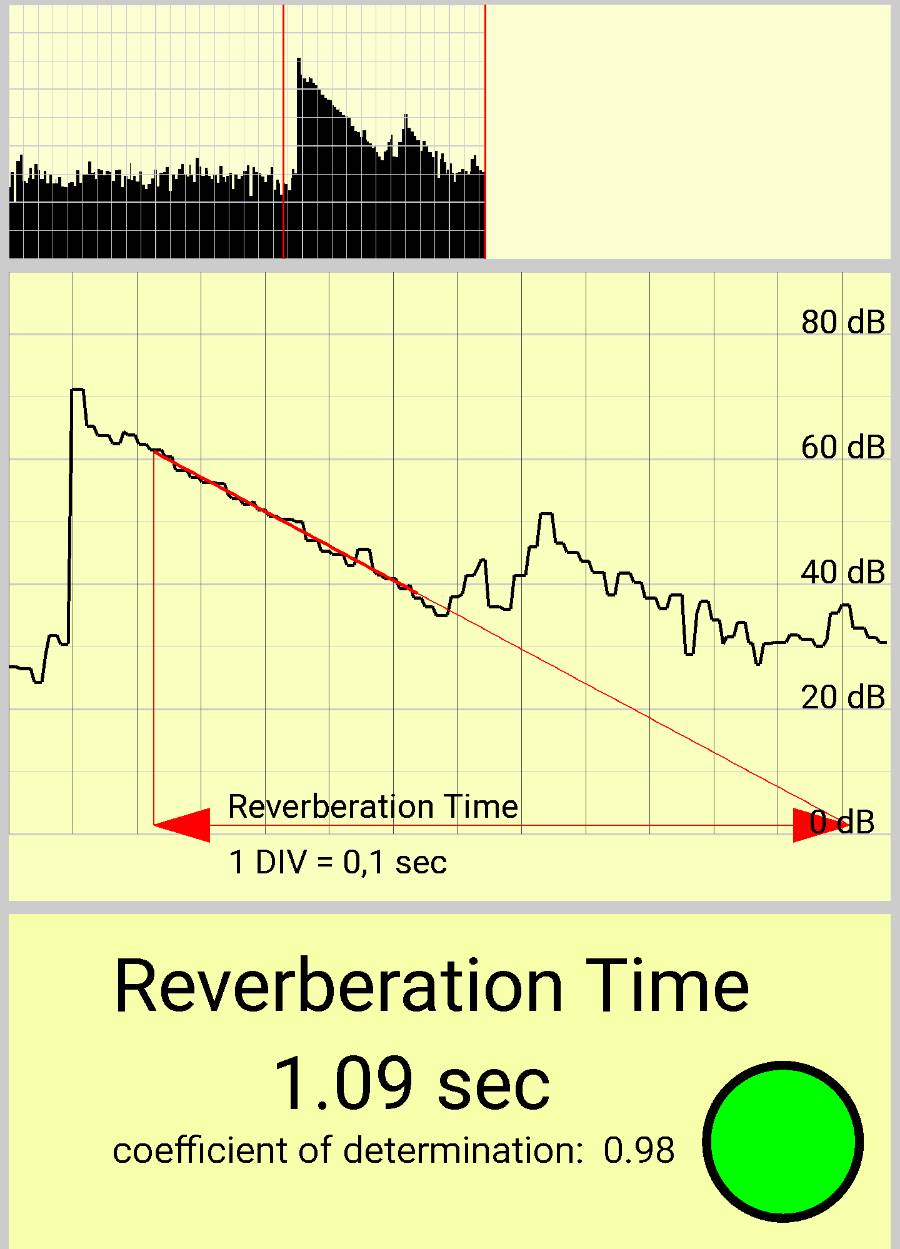
This echo reduction was almost exactly in line with our predicted model. Generally, Sabins Formula is extremely effective when the room is rectangular, and there are not other echo phenomena occurring, such as flutter echo or creep echo.
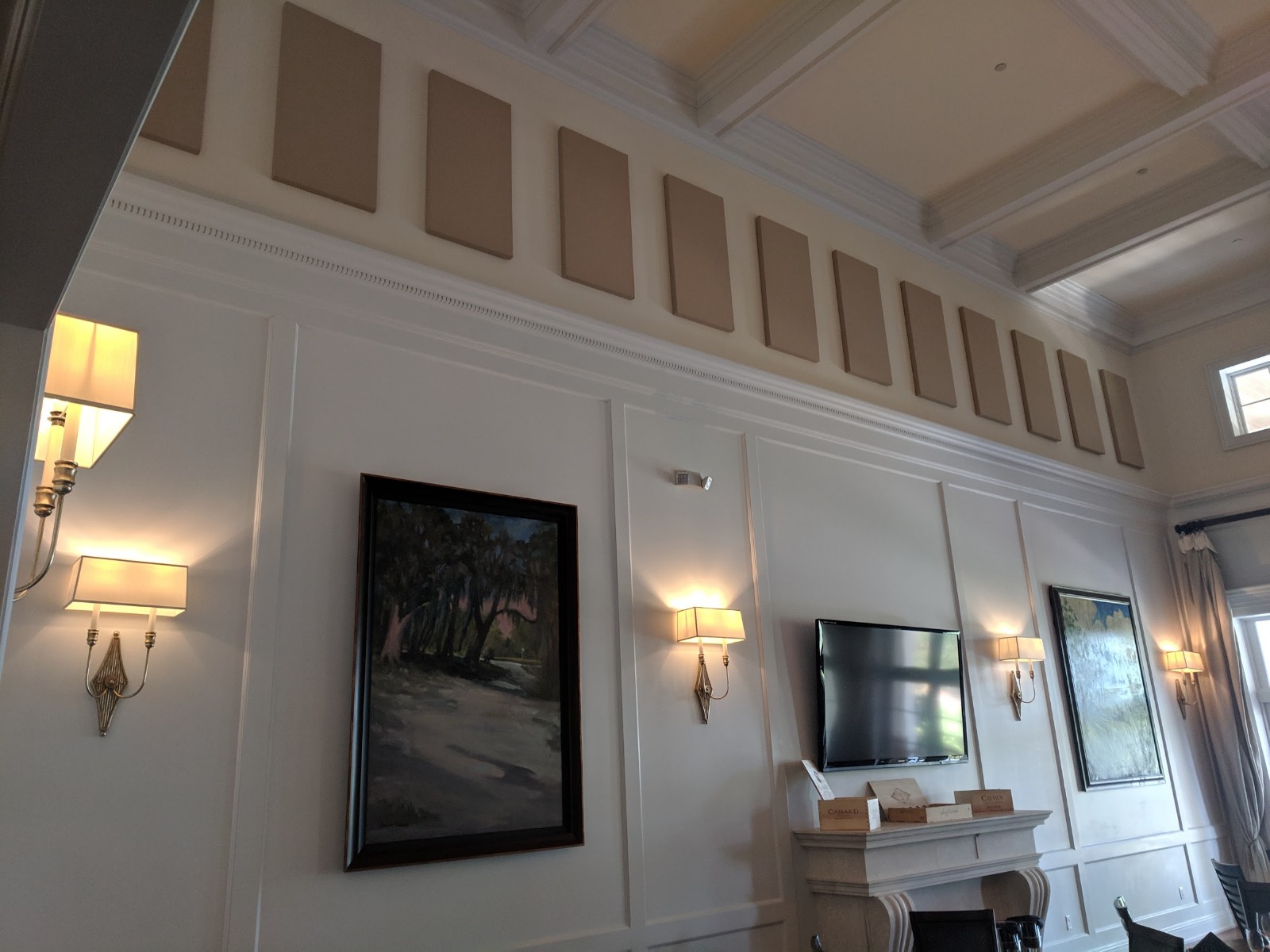
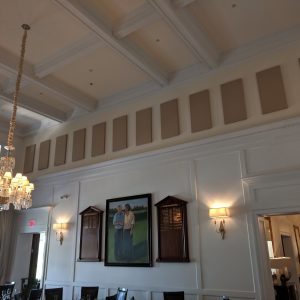
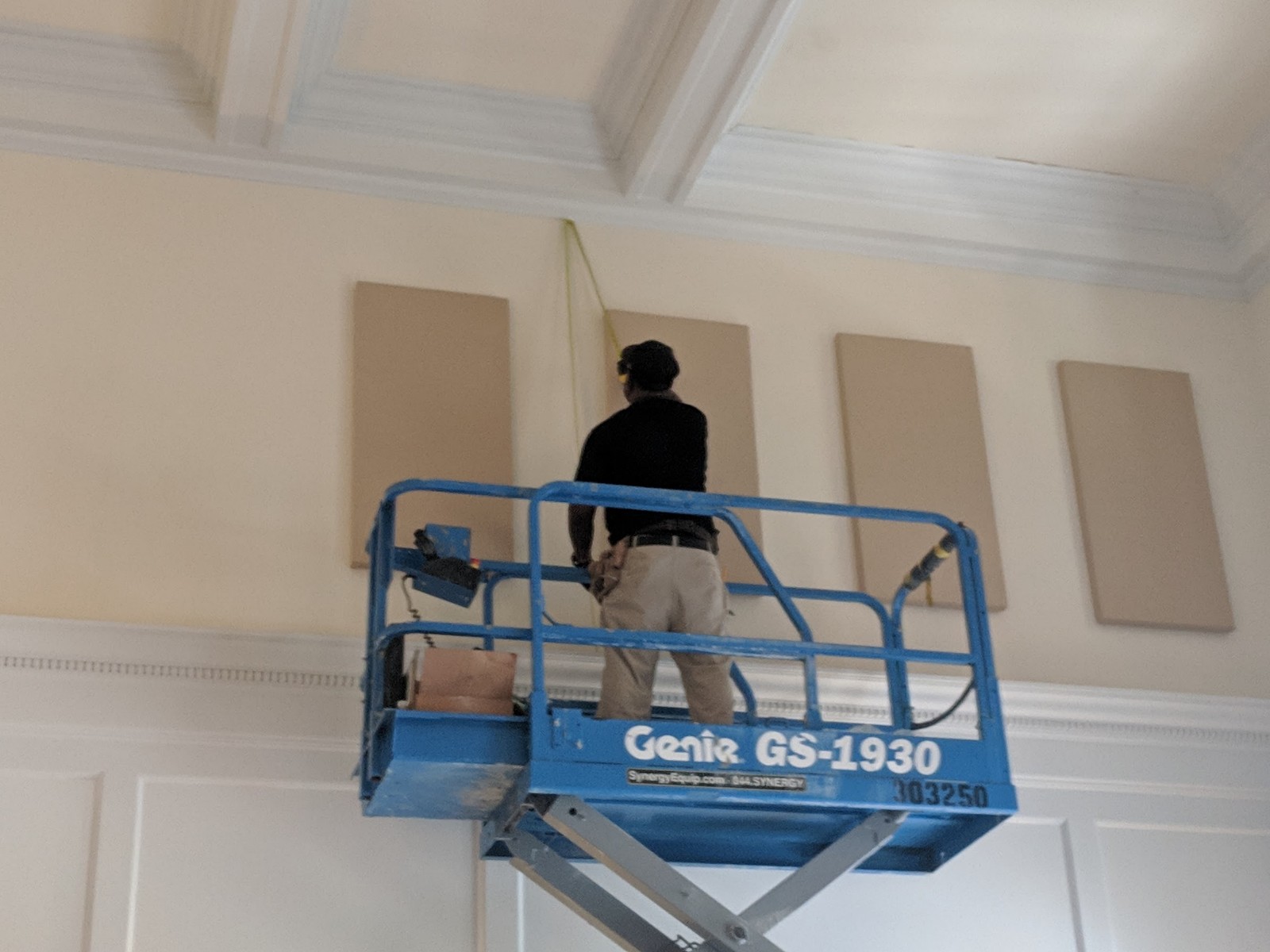
To learn more about our Architectural Acoustical Products, check here.
How do you know if your Clubhouse Needs Acoustic Treatment?
Many times this is obvious – members of the board or other clubhouse attendees continue to mention how loud it is! If that’s the case, then an acoustic treatment may be obviously needed. However, if they’re not that straight-forward, then more subtle hints include people having a hard time talking during lunch or dinner, or constantly asking you to repeat yourself. This is an indication that the reverb in the room is too long to have strong speech intelligibility.
If your clubhouse has hard, reflective surfaces (often-times the case to reduce cleaning bills), then echoes develop in the room. This is even more-so the case when high walls or large footprints are involved.
Other Options to Treat Clubhouse Noise Issues
If acoustic panels and other treatment options are out of the budget, then you can consider treating the sound yourself by substituting existing seating with plush furniture, or by adding in heavy drapery. The thicker, softer chairs have the ability to absorb some unwanted reverb, while curtains made of heavy velvet or velour will act as absorbing agents in the space.
You may also consider adding in area rugs, or other soft, porous materials that can contribute to acoustical absorption.
In Summary – Clubhouse Acoustics
Overall, acoustic issues in clubhouses can be a touchy subject. Club members pay dues and expect a certain level of speech comfort, and if you have high walls and reflective surfaces, these may be difficult to achieve. By using acoustical treatments, you can maintain an elegant aesthetic while also providing an ideal acoustic environment for your clubhouse.

